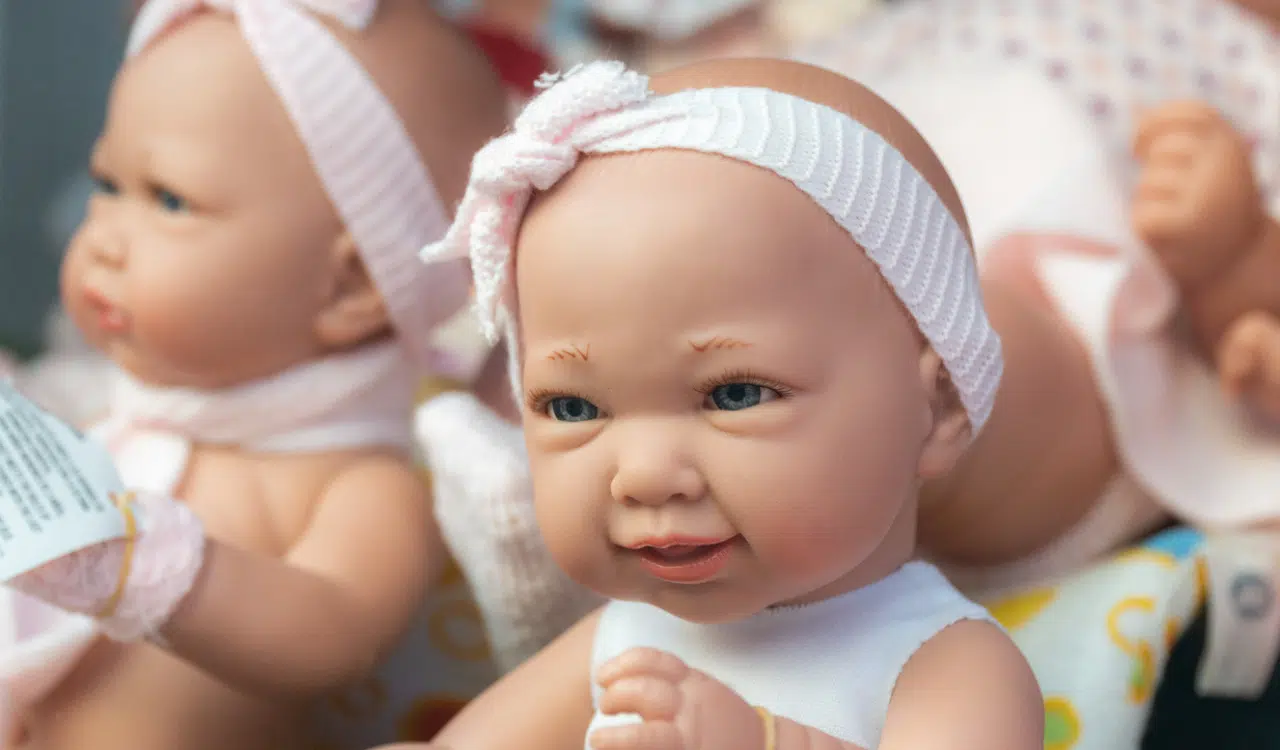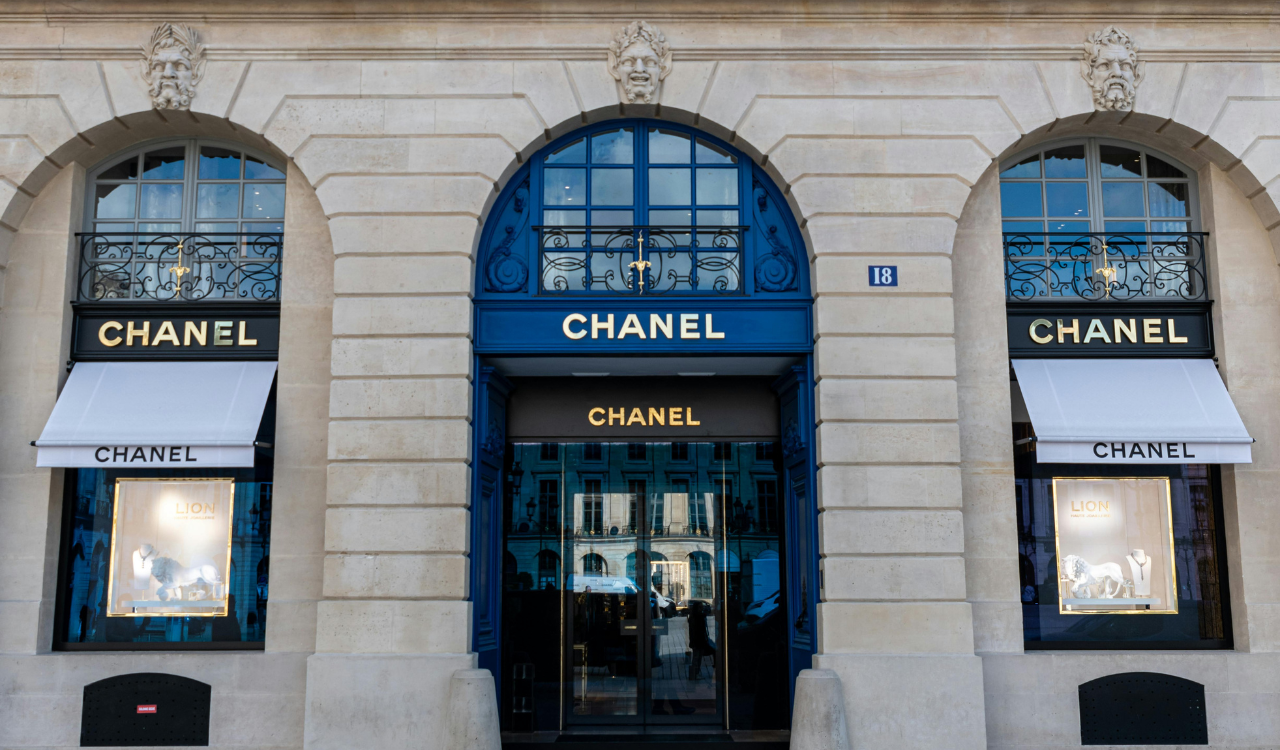Ever since the Pop Mart Labubu craze erupted, I’ve been having déjà vu from the 1990s Beanie Babies fad. Back in the day, there was a whole industry built around manufactured collectibles, and I was part of it, working for the industry’s leader during its heyday, The Franklin Mint.
There is no age limit for doll collecting. In fact, it tends to grow with age. Among doll collectors, kids’ rooms abandoned during the empty-nesting years are repurposed as doll nurseries. And the growing kidulting trend, where adults aged 18 and above revert to or continue on with their play toys, will bring younger doll collectors into the fold.
Collecting, Reborn
However, there are big differences between then and now. Collectible dolls (Madame Alexander, Barbie, Franklin Mint, and Robert Tonner) were the big thing before Beanie Babies arrived on the scene. For the record, both Beanie Babies and Labubu are classified as plush, not dolls. Then, following a spectacular rise, Beanie Babies crashed and burned when the new century arrived; soon after, the collapse of Beanie Babies brought the entire collectibles industry down, dolls and all. The Franklin Mint went bankrupt in 2003.
Today, Pop Mart is ushering in a new collectibles era, and while history predicts that the Labubu fad won’t last, it’s going to be a fun ride for Pop Mart and the other players that take advantage of the reignited collecting passion. The last time plush marked the end, not the beginning, of a collectibles boom. This time, plush heralds the beginning of a new collecting surge that will carry over into dolls.
We’re already seeing the beginnings of it as women embrace reborn dolls – collectible baby dolls that look and feel like the real thing. And it’s spun off a business for reborn doll clothes and accessories. Amazon sells a wide range of reborn dolls under $50. Ashton Drake, which has been around since 1985 and stayed in business after the collectibles industry crash, sells them starting around $50 and going up to $250. But according to the Wall Street Journal, one-of-a-kind reborns can go for $8,000 or more.
Collect or Play?
According to the Toy Association, the U.S. play doll market has had a rough ride since 2021. Play doll sales, as measured by Circana’s checkout sales data, dropped just over 30 percent from 2021 to 2024, from a reported $3.9 billion to $2.7 billion. However, because Circana tracks only about 70 percent of the total market, the U.S. play doll market totaled an estimated $4 billion last year and declined 8 percent from 2023.
Plush, by contrast, grew nearly 40 percent, from an estimated $2.8 billion in 2021 to $3.9 billion in 2024, and that was before Labubus hit. Through the first half of 2025, Pop Mart’s revenues have risen over 200 percent to nearly $2 billion.
The global collector doll market totalled $13 billion last year and is expected to reach $14 billion in 2025, up about 7 percent over 2024. The U.S. holds a one-third market share, putting it at roughly $4.3 billion last year and $4.6 billion this.
While the play doll market is going down, collector dolls are going up. That’s attributed partly to girls outgrowing their interest in play dolls faster – between ages 6 and 8, girls’ play starts to evolve, and by ages 9 to 12, they’ve largely moved on.
However, there is no age limit for doll collecting. In fact, it tends to grow with age. Among doll collectors, kids’ rooms abandoned during the empty-nesting years are repurposed as doll nurseries. And the growing kidulting trend, where adults aged 18 and above revert to or continue on with their play toys, will bring younger doll collectors into the fold.
The collectible doll market has another advantage: it is not at the mercy of the latest fad and trend, unlike the toy doll market. The collector doll market is reliably steady and projected to grow at a compound annual growth rate of around 6.9 percent through 2033.
Barbie: Queen of Play Dolls for Collectors
There’s clearly an overlap in the play and collectible market with Barbie being the crossover favorite. Mattel estimates there are well over 100,000 avid Barbie collectors and 90 percent are women, averaging 40 years old. These Barbie collectors tend to purchase more than 20 Barbie dolls per year, and nearly half spend about $1,000 per year on their collections. Mattel produces higher-priced special editions and signature dolls to feed collectors’ passion.
Yet, Barbie’s sales remain highly trend-driven. Mattel reported that in 2021, Barbie generated $903.5 million, then dropped by 14 percent to $776 million in 2022, only to bounce back 8 percent to $840 million in 2023 after the release of the Barbie movie. But the good times didn’t last. Barbie sales fell another 14 percent fall in 2024 to $735 million.
Mattel’s American Girl dolls also have a collector following, though not to the extent of Barbie. However, unlike Barbie, which has roller coasted in sales from 2021 to 2024, American Girl sales have been on a steady declined. American Girl revenues reached $270 million in 2021, dropped to $227 million in 2022 and to $207 million in 2023 (the year Barbie the movie was released). However, in 2024, Mattel folded American Girl results into its North America Dolls reporting segment, effectively hiding its poor performance from prying eyes.
American Girl is primarily a direct-to-consumer brand operating five boutique stores, including its massive experiential New York City flagship, which offers salons (for both dolls and owners), birthday parties, dining cafe, and doll hospital services. During American Girl’s prime about ten years ago, it operated over 20 boutiques, including three international stores. Now it only operates in North America.
Madame Alexander Doll Company is another brand that offers both play and collectible dolls. It is privately owned by Kahn Lucas, a children’s clothing company. Madame Alexander maintains an online website, has limited distribution in specialty toy stores and also sells online on Amazon, Walmart, Target and Barnes & Noble.
Baby Dolls Are Collectors’ Top Pick
While Barbie, American Girl and Madame Alexander fill a niche in the collector doll market, as do antique dolls, the greatest share of collectors go for baby dolls, the so-called reborn dolls segment, valuing realism and the emotional connection.
There are at least as many baby doll collectors as there are Barbie aficionados, maybe even more, since it’s a passion women indulge in privately. Because reborns are so lifelike, the casual observer, even friends and family, can find them slightly unnerving. After attending the recent “Dolls of the World” fair in Greensboro, NC, where 1,500 serious collectors gathered, Wall Street Journal reporter Rory Satran found that for many, reborn dolls offer therapeutic comfort, but this can add to the creepiness factor for those outside the community.
For example, the Apple TV show Servant, produced by acclaimed horror filmmaker M. Night Shyamalan, which ran from 2019 through 2023, elevated the reborn creepiness factor. It followed the story of a couple who lost their infant son. The mother, trapped in her grief, acquired a reborn doll as a substitute baby, convinced it was real, and hired a nanny who played along with the mother’s delusion.
Unlike traditional doll collectors who display their prized possessions and keep the original packaging, reborn collectors actually play with their dolls, dressing them, cradling them and taking them out for a stroll. Earlier this summer, when Brittany Spears announced she’d adopted a baby girl, and a baby carrier was spotted in the background of a video, fans speculated it was actually a reborn doll, which TMZ and E! subsequently confirmed.
Some Girls Never Outgrow Dolls
The Labubu plush collecting phenomenon is sure to fuel a resurgence of doll collecting. While play dolls intended for girls’ play face declining interest, the kidulting trend has shifted the toy industry toward feeding the passion among adult enthusiasts. Collector dolls, especially reborns, will benefit, thanks to their emotional resonance, artistry, and appeal to women of all ages.
This shift signals a more stable and enduring phase for the doll industry, where passion, nostalgia, and personal connection drive growth rather than fleeting trends. As the lines between play and collecting continue to blur, the future of dolls looks more vibrant and synthetically alive than ever.





